I say great logos, and you hear Apple, Google, Nike, Starbucks, FedEx, etc. You’re right. They are all masterpiece logos. Be it in New York or Sydney, consumers around the world instantly recognize them. They have built a brand value that’s hard to break. In these logos or any other logo in the world, there is one constant thing – changes. Logos exist to be modified, often to represent newer brand priorities or just a reflection of changing times. There are several modern logo examples, and all of them are great, reflecting how design peculiarities change as time moves forward.
How logo designing has evolved
Logo designing has undergone a significant evolution over time, reflecting changes in technology, design principles, and cultural shifts. In the early days, logos were often simple and primarily served the purpose of identification, with companies using symbols, emblems, or monograms. As technology advanced, particularly with the introduction of digital design software, logo designs became more intricate and versatile.
Designers could experiment with a wider range of shapes, colors, and typography, leading to more creative and impactful logos. Professional logo designs began to incorporate abstract shapes, gradients, and intricate patterns, reflecting the diversity of design possibilities afforded by digital tools.
The 1960s were all about geometric shapes, while the 1970s saw a rise in sans-serif fonts, with clean lines and bright colors dominating logos like McDonald’s and Pepsi. Finally, the late 20th century saw the rise of computers, offering more design flexibility. This paved the way for the simple, tech-focused logos we see from brands like Apple and Google.
Modern-style logos are now minimalistic, with an emphasis on simplicity, clarity, and precision, often stripping away unnecessary elements to create clean and memorable logos. Modern-looking logos rely on strong typography, negative space, and subtle symbolism to convey the essence of a brand concisely.
In this blog, we will see the trends that are reshaping modern logo styles and also look at some of the examples from relatively unknown brands that have set a benchmark with their ingenious logo designs.
Simplified logos
Modern logos have been decluttered and moved towards simplistic styles. It’s like the architecture of today. It lacks the grandiosity of the past and is more a reflection of the fast-paced and casual lifestyles of modern times.
Simplified logos are basically logos that are redesigned so that they better represent the company’s new vision and ideas. Sometimes, these logos are also changed so that they are easy to read and are smaller in size.
Take the example of American automaker General Motors. In 2021, the company went from a complex logo with a chrome emblem to a minimalist design featuring lowercase “g” and “m” in electric blue. This change reflects their shift towards becoming a leader in electric vehicles and a more modern brand image.

Abstract is the new geometry
Logos are embracing imperfections and custom typography as it can add a sense of authenticity and approachability. Gone are the days of literal representations. Now, geometric shapes, abstract forms, and even hidden messages are used to spark curiosity.
Meta’s new infinity symbol logo is the biggest example of this shift. The company, formerly Facebook, went through a significant rebranding to distance itself from the social media platform’s baggage and establish itself as a company focused on the metaverse – a futuristic digital world.
The modern logo with abstract shapes reflects this shift towards a new and innovative identity. It gives the message that the company is at the forefront of technological advancement. These abstract shapes can be open to interpretation, sparking curiosity and conversation.

Hand drawn Logos
Modern logo designs are embracing a more human touch with hand-drawn elements. Earlier, hand-drawn designs used to be favored only by barbershops, pubs, bars, etc., but now, imperfection has been becoming the norm.
In a blog titled, ‘Top 15 emerging logo trends for 2023’, Adobe said, “Endearingly imperfect, these sketched-out logos — scribbled up as if by a child with a penchant for graphic design — are meant to be accessible, personable, and deeply rooted in the enduring trend of pulling inspiration from nostalgia, especially when it comes to ‘90s styles.”
Topography Logos
Sans-serif fonts remain the undisputable king of modern logo designs. It offers a clean and minimalist aesthetic that aligns perfectly with modern design trends, as clean lines make logos more readable, especially at smaller sizes, which are crucial in our digital world.
There’s also a growing trend of modern logos utilizing custom fonts, and for good reason. In today’s saturated marketplace, a unique brand identity is crucial. A custom font allows a brand to create a bespoke typographic element that reflects its specific personality and values. It sets them apart from competitors who might rely on generic fonts.
Fonts carry a lot of personality. A custom font, meticulously crafted to align with the brand’s message, can become a powerful storytelling tool. The weight, style, and details of the font can all contribute to the overall brand image.
Consider the example of Mailchimp. The email marketing platform has revamped its logo with a custom font called “Mailchimp.” The whimsical and playful typeface reflects the brand’s personality and makes them easily recognizable.

A touch of retro charm
Nostalgia never gets old. We all remember what the Pepsi logo used to look back in the day, and even when we see that logo today, we feel a subtle joy as it takes us back to the past and refreshes memories.
That’s why the popular drinks brand has gone back to its old logo after 14 years. About its new logo, Pepsi said: “The new logo thoughtfully borrows equity from Pepsi’s past whilst incorporating modern elements to create a look that is unapologetically current and undeniably Pepsi.”

Another reason for going back in time is that the modern design landscape is dominated by minimalism. Today, a touch of vintage flair in its logo can help a brand name stand out from the crowd of clean lines and flat colors. It creates a unique and memorable visual identity.
Chaotic is the new norm
With minimalism, modern logo design trends blend a sense of chaos. While some logos embrace simplicity, others intentionally introduce chaos for impact. Chaos allows brands to express creativity, energy, and uniqueness as these designs feature unexpected graphic solutions that surprise viewers. Some chaotic logos embed hidden meanings or messages, and brands use this approach to engage curious audiences.

See the logo of the Spanish fashion brand Desigual here. It is the perfect example of chaos and divergence from norms. Why would you have a reversed logo otherwise? This represents the company’s tagline of “forward is boring” and helps it stand out.
With modern designs, logos are becoming more and more divergent and, in a sense, rebellious – traits quintessential to Gen Z, who are people born between 1997 and 2012. The generation is being targeted by most brands as they are the largest generation demographic on Earth, with roughly 2.56 billion – one-third of the global population – of them. So it is only logical for companies to position themselves as a brand which millennials could resonate with and feel a connection with.
Modern logo examples that have embraced the new world
Now that we have looked into how modern logo designs continue to evolve to stay in touch with contemporary demands let’s look at some of the examples to see how modern brands have incorporated these design elements into their logos.
1. MUJI
While MUJI is more well-known in some parts of the world, it might be considered lesser known globally. This Japanese brand offers an extensive variety of household goods, apparel, and food items. Their logo uses a minimalist sans-serif font that conveys a sense of simplicity and clean design.

2. Roam Research
Roam Research is a powerful note taking tool designed for networked thought. It combines the ease of use of a document with the capabilities of a graph database. This note taking and knowledge management software is gaining traction but isn’t a household name yet.
They have a symbology logo with a medieval apparatus as part of the design. While people have differing opinions over what the logo represents, most people agree that it resembles a mariner’s astrolabe, an inclinometer used to measure the angle of tilt, inclination, or slope of an object relative to gravity. Its most prevalent use was to determine the latitude of a ship at sea by measuring the sun’s noon altitude or the meridian altitude of a star of known declination.

3. Faraday Future
Faraday Future (FF) is an electric vehicle startup company founded in 2014. It designs and manufactures premium electric vehicles with a focus on innovation, technology, and user experience.
The company’s logo features two stylized capital “F”s intertwined to form a diamond shape, giving it a sleek and futuristic look. While the company issued no official word on what the logo depicts, its most obvious representation could be that the diamond symbolizes innovation, luxury, and cutting-edge technology, all of which align with Faraday Future’s brand aspirations.

4. Otter.ai
Otter.ai is a software tool that specializes in speech-to-text transcription. It uses artificial intelligence to convert spoken conversations into written text in real-time. Their logo features an “o” with sound waves, cleverly referencing their core functionality. The logo design has a blue color scheme and blue is often associated with trust and communication.

5. Patagonia
Patagonia is a popular outdoor apparel and gear company founded in 1973 by Yvon Chouinard, an avid climber and environmentalist. The company’s USP is that it sells high-quality products, and its brand value is a deep commitment to environmental activism and advocacy for sustainable business practices.
Patagonia is a mountainous region between Argentina and Chile and the company’s logo also features a stylized image of a mountain range with text in bold white colors. The design is simple and slightly rough around the edges, conveying a hand-drawn and organic feel.

Patagonia’s logo is a successful example of a design that is both simple and meaningful. It effectively conveys the brand’s core values and resonates with its target audience.
6. Squarespace
Squarespace is a website building and hosting platform that allows users to create professional-looking websites without needing extensive coding knowledge.
The Squarespace logo is a minimalist design featuring a lowercase “s” comprised of four squares perfectly balanced within a larger square. It also consists of the brand name “Squarespace” written in uppercase letters in Gotham Book font, which is clean, sans-serif, and straightforward.
The logo embodies Squarespace’s commitment to user-friendly design. It avoids unnecessary complexity, aligning with the platform’s goal of making website creation accessible to all.

7. Dun & Bradstreet
Dun & Bradstreet, often abbreviated as D&B, is a global company that provides business intelligence products and services. The company helps businesses assess risk, improve profitability, and make better decisions through data and analytics.
Its logo is a perfect blend of symbology and text as the company’s name not only prominently appears in the fonts, but the “&” is also a subtle play to represent the brand’s initials “d” and “b”.

Conclusion
These modern logo examples demonstrate that designing has evolved to become cleaner, and designers are taking more liberty to break the traditionally set parameters of logo designs. While some brands have simplified their logos, others have made them more cluttered to represent the complications of the modern world. It is simply that for a modern logo, inspiration could come from anywhere. When combined with creativity in symbology and typography, we have at our hands logos that will be looked back on as the best e




